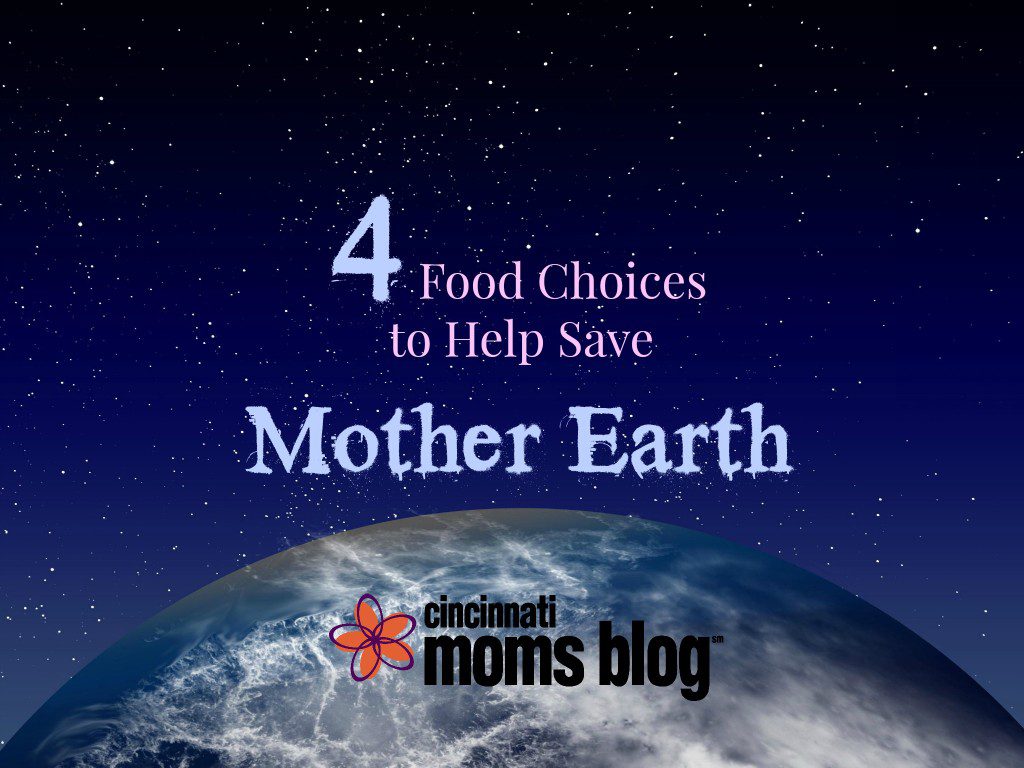 Food choices are the biggest way we can impact our earth’s health. A lot of people think cars and industry are the biggest causes of pollution, but in reality it is food production. Here are some tips to eating that will help save the earth, plus they are healthier for you, too!
Food choices are the biggest way we can impact our earth’s health. A lot of people think cars and industry are the biggest causes of pollution, but in reality it is food production. Here are some tips to eating that will help save the earth, plus they are healthier for you, too!
Choose organic.
The word “organic” refers to the way farmers grow and process agricultural products, such as fruits, vegetables, grains, dairy products and meat. Organic farming practices are designed to encourage soil and water conservation and reduce pollution. Farmers who grow organic produce and raise organic meat don’t use conventional methods to fertilize, control weeds or prevent disease. For example, rather than using chemical weed killers, organic farmers may rotate crops and spread mulch to keep weeds at bay. Some of the chemicals used on produce are known carcinogens and hormone disruptors. Another issue with these chemicals and fertilizers is the runoff into the Gulf of Mexico. These chemicals are creating a dead zone, or area of reduced oxygen in the water.
– NOAA
Choosing organic animal products is another way to positively impact the health of the planet. Organic meats are from animals who have not been given antibiotics. In conventional farming operations, the animals are given antibiotics daily in their feed to prevent disease and promote growth. This is a huge factor in the increase of antibiotic-resistant diseases.
– Food Safety News
You can find more farm pollution facts here.
Reduce meat consumption & Choose Grass-Fed when possible.
– Collective Evolution
– UN News Center
This leads me to conclude that eating vegetarian, even just a few meals a week, can make a bigger impact on our earth that switching to a hybrid car or using different light bulbs (even though those are good things to do as well).
While most people are not so quick to jump on the vegan bandwagon, we all can (and should) consider a few meatless meals per week. Meatless Monday is a huge movement, and has a lot of great recipes to get you started.
Choosing grass fed beef also positively impacts the earth.
“According to David Pimentel, a Cornell ecologist who specializes in agriculture and energy, the corn we feed our feedlot cattle accounts for a staggering amount of fossil fuel energy. Growing the corn used to feed livestock takes vast quantities of chemical fertilizer, which in turn takes vast quantities of oil. Because of this dependence on petroleum, Pimentel says, a typical steer will in effect consume 284 gallons of oil in his lifetime. Comments Michael Pollan, “We have succeeded in industrializing the beef calf, transforming what was once a solar-powered ruminant into the very last thing we need: another fossil-fuel machine.” In addition to consuming less energy, grassfed beef has another environmental advantage — it is far less polluting. The animals’ wastes drop onto the land, becoming nutrients for the next cycle of crops. In feedlots and other forms of factory farming, however, the animals’ wastes build up in enormous quantities, becoming a staggering source of water and air pollution”.
– Food Revolution
Choose Sustainable Seafood.
Overfishing is a non-sustainable use of the oceans, leading to endangered species, by-catch of other species, and damage to the ecosystems.
“Worldwide, fishing fleets are two to three times as large as needed to take present day catches of fish and other marine species and as what our oceans can sustainably support. On a global scale we have enough fishing capacity to cover at least four Earth like planets”.
An easy way to make a change? Down load the Seafood Watch app for you phone. Use it at the seafood counter and at restaurants to quickly look up specific seafood options.
Also, look for the MSC certification seal on seafood items to ensure they are harvested in sustainable ways.
Support Local Food.
– Ecotrust
A typical carrot has to travel 1,838 miles to reach your dinner table. Whoa!
There is also a lot of packaging waste for produce that travels a long distance to get here. Think about all the crates, plastic wrap, bags, etc. that are used in shipping. A lot of that cardboard is wax-coated, making it non-recyclable.
One easy way to take action is by shopping at your farmers market. Find a great list of local markets here. Make it even more local by starting a small garden in your own backyard. Even if you only have a patio, you can grow a tomato plant or a small herb garden.
In the above post, Chrissy references several sites. For more information, you can click on the links here or above.
- National Oceanic and Atmospheric Administration
- Food Safety News
- National Resources Defense Council
- Collective Evolution
- UN News Center
- Food Revolution
- Overfishing.org
- Ecotrust













